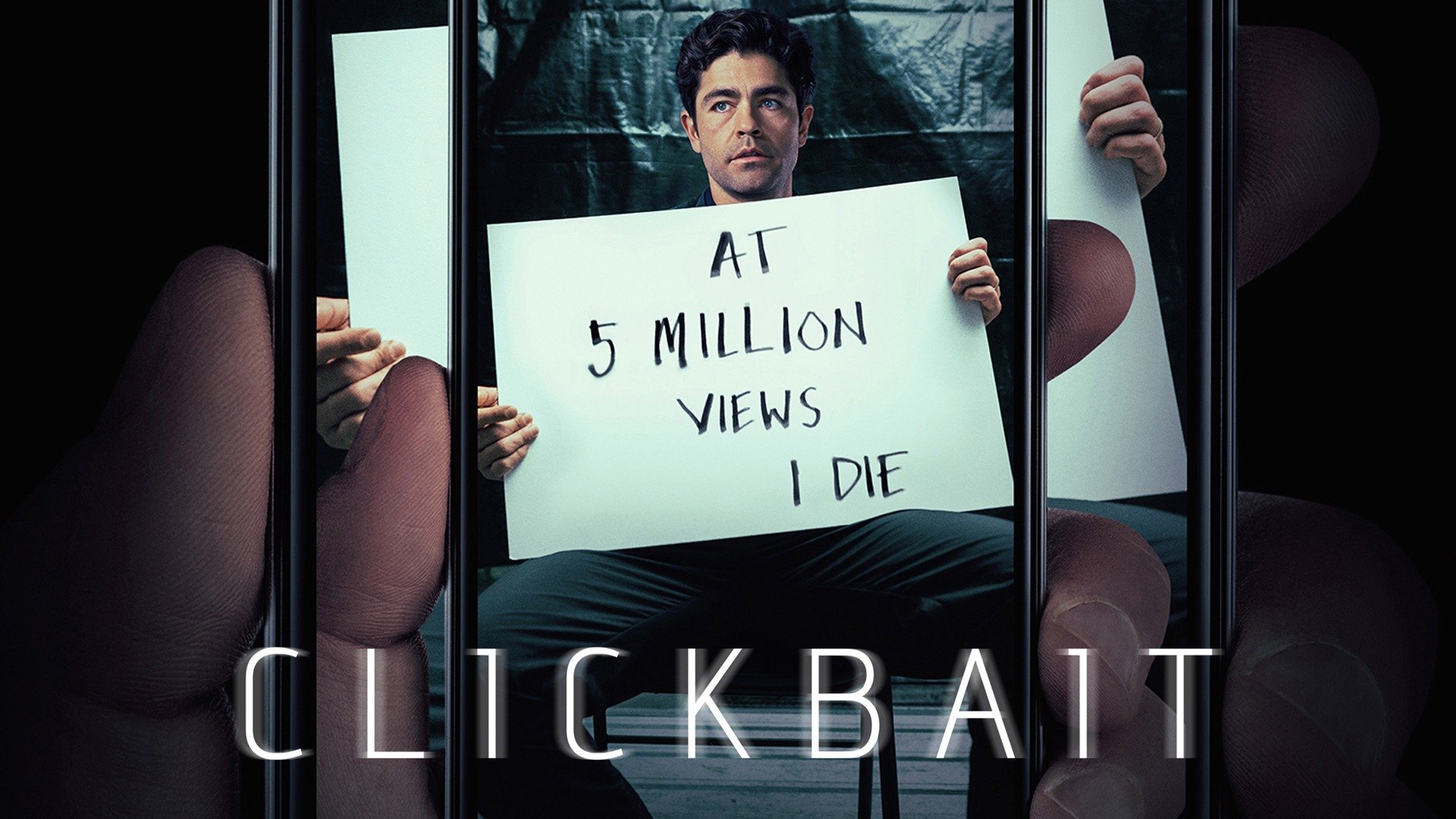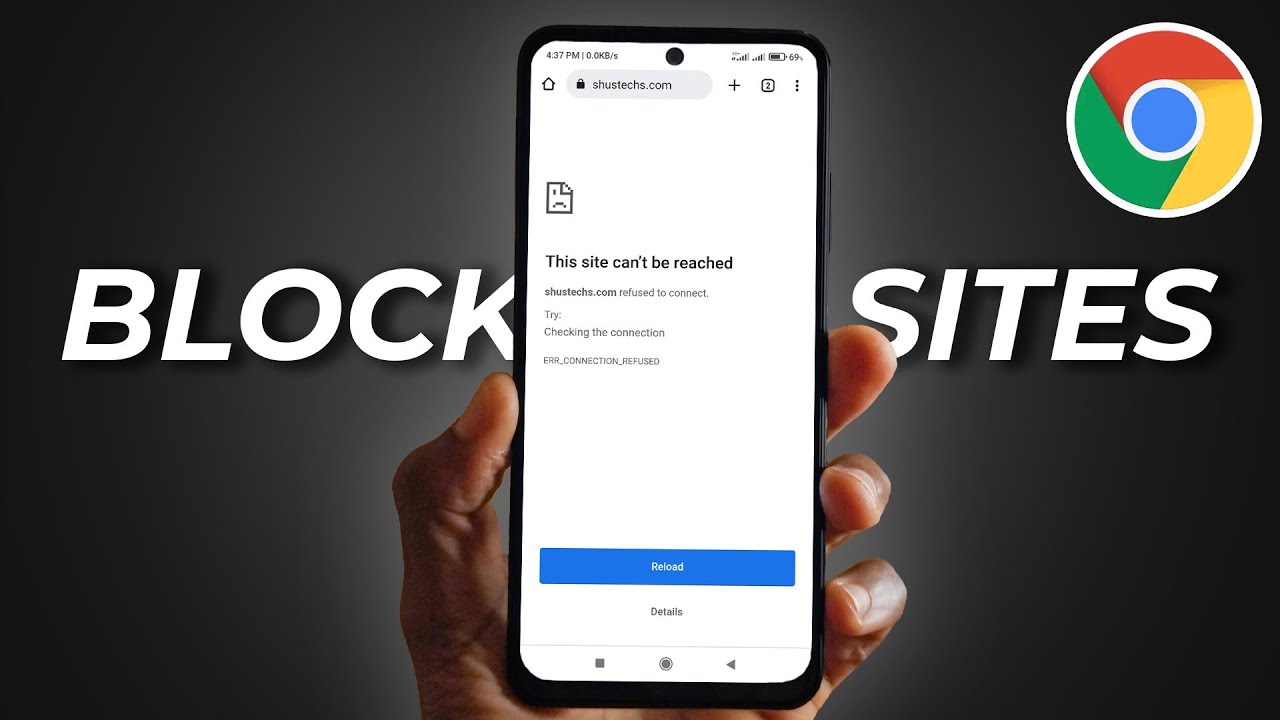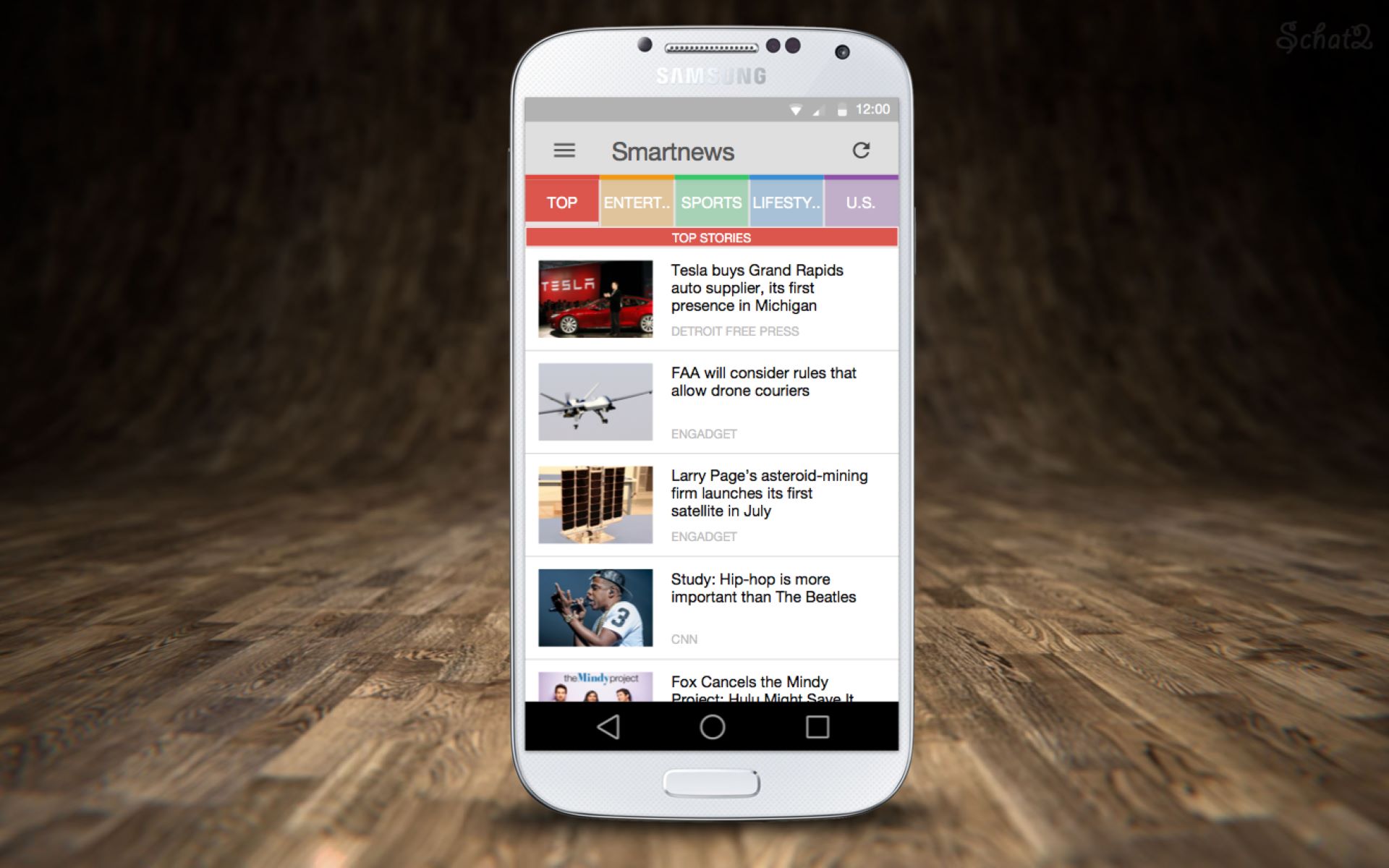Introduction
Netflix has become one of the most popular streaming platforms in the world, offering a wide range of movies, TV shows, and original content. As users browse through the extensive library, they often come across eye-catching titles that pique their curiosity. These titles are known as clickbait, and they are strategically crafted to entice users to click and watch.
Clickbait, a term that originated on the internet, refers to content that is specifically designed to attract attention and encourage users to click through to the full content. Typically, clickbait utilizes sensational or misleading headlines that generate curiosity and create a sense of urgency.
On Netflix, clickbait titles are prevalent and play a crucial role in attracting viewers. When scrolling through the platform’s homepage or genre-specific sections, users are bombarded with titles that promise intrigue, suspense, and entertainment. These titles, often accompanied by captivating images, are carefully chosen to grab the attention of the audience.
So, why does Netflix resort to using clickbait? The answer is simple: to boost engagement and increase viewership. With so much content available on the platform, the competition for viewers’ attention is fierce. By employing clickbait titles, Netflix aims to stand out from the crowd and entice users to click and start watching.
However, it’s essential to understand the psychology behind clickbait and its impact on users. Falling for clickbait can lead to disappointment, wasted time, and frustration. As users, it is crucial to know how to identify clickbait and make informed choices about what to watch on Netflix.
In this article, we will delve deeper into the world of clickbait on Netflix. We will explore why Netflix uses clickbait, discuss the psychology behind it, and provide strategies to avoid falling for clickbait. Additionally, we will examine the distinction between clickbait and genuine recommendations, helping viewers navigate the vast array of content available on the platform.
The Definition of Clickbait
Clickbait is a term used to describe content, particularly headlines or titles, that is designed to attract attention and entice users to click through to the full content. It employs sensational or misleading elements to create curiosity and a sense of urgency, often leading to disappointment or dissatisfaction once users engage with the content.
The main objective of clickbait is to generate web traffic and increase click-through rates. It capitalizes on users’ natural curiosity and desire for instant gratification by presenting them with enticing promises or claims. This could include headlines that make bold statements, promise exclusive information, or offer shocking revelations.
Clickbait techniques are commonly employed across various online platforms, such as news websites, social media platforms, and streaming services like Netflix. The aim is to stand out from the competition and capture users’ attention in a crowded digital landscape.
Clickbait titles often utilize emotional triggers, such as fear, curiosity, or surprise, to grab users’ attention. They may employ exaggerated language or make dubious claims to generate interest. For example, a clickbait title might read “You won’t believe what happened next!” or “This movie will change your life forever!”
It is important to note that not all catchy or intriguing titles are necessarily clickbait. Genuine recommendations and compelling content can also have attention-grabbing titles. The key distinction lies in the intention behind the title and whether it misrepresents or oversells the actual content.
While clickbait can initially attract users, it often leads to disappointment or frustration when the actual content fails to live up to the hype. This can create a negative user experience and erode trust in the platform or website using clickbait tactics.
To maintain the integrity of online content and enhance the user experience, it is crucial for platforms like Netflix to strike a balance between captivating titles and delivering quality, relevant content. This ensures that users are not misled or deceived and can make informed choices about what they choose to engage with.
Clickbait Titles on Netflix
When browsing through Netflix, it’s hard to miss the numerous clickbait titles that populate the platform’s homepage and genre-specific sections. These titles are carefully crafted to grab users’ attention and entice them to click and start watching a particular movie or TV show.
Clickbait titles on Netflix often employ sensational language, intriguing questions, or provocative statements to generate curiosity. They create a sense of anticipation, making users eager to find out more about the content. These titles are designed to tap into users’ emotions, whether it’s the promise of thrilling suspense, heartwarming romance, or gut-wrenching twists.
One common approach to clickbait titles on Netflix is to tease viewers with incomplete information or cliffhangers. This strategy leaves users craving answers and encourages them to click and start watching to satisfy their curiosity. For example, a clickbait title might say “The Secret Life of…,” leaving the viewer intrigued about what the secret entails and prompting them to dive into the content.
Additionally, clickbait titles often make provocative claims or comparisons to well-known movies or TV shows. They may use terms like “the next big thing” or “like Game of Thrones, but better” to entice viewers. These statements create high expectations and capture the attention of users who are looking for exciting new content.
Visual elements also play a significant role in clickbait titles on Netflix. Accompanying images or thumbnails are carefully selected to grab users’ attention and reflect the essence of the content. Vibrant images, intriguing characters, or powerful scenes are often used to entice users to click and explore further.
While clickbait titles can be effective in capturing users’ attention, it’s important to remember that the actual content may not always match the hype created by the title. Users may find themselves disappointed or misled if the content falls short of their expectations. Therefore, it’s essential to approach clickbait titles with a discerning eye and consider other factors, such as reviews, ratings, and the genre of the content, before making a decision to watch.
Netflix acknowledges the presence of clickbait titles on its platform and is continuously working to improve the user experience. The platform aims to strike a balance between engaging titles and delivering content that lives up to users’ expectations. By maintaining transparency and providing accurate descriptions, Netflix strives to ensure that users can make informed choices about what to watch.
Why Netflix Uses Clickbait
Netflix is no stranger to using clickbait titles to attract viewers. The platform employs this strategy for several reasons, each aimed at maximizing engagement and increasing viewership.
Firstly, the sheer amount of content available on Netflix makes it challenging for any single title to stand out. With thousands of movies, TV shows, and originals in its library, Netflix faces the task of grabbing users’ attention and enticing them to click and watch a particular title. Clickbait titles offer a means to cut through the noise and capture users’ interest in a crowded marketplace.
Moreover, clickbait titles on Netflix serve as a marketing tool to generate buzz and create anticipation for new releases or lesser-known content. By using provocative or intriguing language, Netflix can spark conversations and generate curiosity among its users. This word-of-mouth marketing helps to create a buzz around specific titles and drives increased viewership.
Another reason for Netflix’s use of clickbait is to cater to users’ desire for instant gratification and excitement. Clickbait titles tap into users’ natural curiosity and seduce them with the promise of thrilling or captivating content. By presenting enticing titles, Netflix aims to capture users’ attention and make them more likely to click and start watching, satisfying their immediate craving for entertainment.
Additionally, clickbait titles can serve as a way to overcome decision fatigue. With endless choices available, users may feel overwhelmed or indecisive when trying to select something to watch. Clickbait provides a quick and catchy hook that grabs users’ attention and helps them make a decision more easily. It simplifies the decision-making process and provides a starting point for users to explore Netflix’s vast library.
While clickbait can be effective in driving engagement, it is important to strike a balance. Netflix acknowledges the need to deliver on the promises made by clickbait titles, ensuring that the actual content lives up to users’ expectations. By continuously improving its recommendation algorithms and content curation, Netflix aims to provide users with relevant and high-quality content that matches their interests.
The Psychology Behind Clickbait
Clickbait is not solely based on luck or chance; it is rooted in the understanding of human psychology and the way our brains are wired to respond to certain stimuli. Several psychological factors contribute to the effectiveness of clickbait titles.
One key aspect of clickbait is the use of curiosity. Humans have an innate desire to seek out information and understand the unknown. Clickbait titles tap into this curiosity by posing questions, teasing incomplete information, or promising secrets. The human brain is wired to seek closure, and clickbait exploits this tendency, making users eager to click and satisfy their curiosity.
In addition to curiosity, clickbait leverages the power of emotional triggers. Emotions play a significant role in decision-making, and clickbait titles are designed to elicit strong emotional responses. Titles that evoke curiosity, fear, surprise, or anticipation naturally capture users’ attention. The emotionally charged language used in clickbait titles can trigger the release of neurotransmitters such as dopamine, which creates a sense of pleasure and reward.
The clickbait strategy also takes advantage of cognitive biases that influence our decision-making processes. For example, the scarcity bias creates a sense of urgency by making users feel that the opportunity to access exciting or exclusive content is limited. This leads to a fear of missing out (FOMO) and prompts users to click and engage with the content before it’s too late.
Human beings are social creatures, and clickbait takes advantage of social proof. When a clickbait title claims that “everyone is talking about this” or “you won’t believe what everyone is watching,” it appeals to people’s desires to align with popular trends and be a part of the conversation. Users are more likely to click and engage with content that they perceive as popular or widely discussed.
However, it’s important to note that clickbait can also exploit cognitive vulnerabilities. The desire for instant gratification, combined with cognitive shortcuts and biases, can make users susceptible to clickbait’s manipulative tactics. It’s crucial for users to be aware of these psychological influences and approach clickbait titles with a critical mindset.
To mitigate the negative impact of clickbait on users, platforms like Netflix can employ responsible content curation practices. By providing accurate descriptions, incorporating user feedback, and prioritizing genuine recommendations, Netflix can ensure that users have a more authentic and satisfying viewing experience.
The Impact of Clickbait on Users
Clickbait can have both positive and negative effects on users. While it may initially attract attention and encourage engagement, its impact can extend beyond the immediate click-through. Understanding the consequences of clickbait is crucial for users in navigating the vast amount of content available on platforms like Netflix.
One of the immediate impacts of clickbait is the potential for disappointment or dissatisfaction. Users may find that the actual content does not live up to the hype created by the clickbait title. This can lead to a sense of wasted time and frustration, especially if the promise made in the title is not fulfilled in the actual content.
Moreover, clickbait can perpetuate a cycle of continuous clicking and superficial engagement. Users may find themselves constantly searching for the next clickbait title, chasing the thrill of anticipation without fully immersing themselves in meaningful or fulfilling content. This can contribute to a sense of superficiality and distract users from discovering content that aligns with their genuine interests.
Another potential impact of clickbait is the erosion of trust between users and the platform. When users consistently encounter misleading or disappointing clickbait titles, their trust in the platform’s recommendations may diminish. This can lead to skepticism and hesitation when exploring new titles, making it more challenging for platforms to connect users with content that they may genuinely enjoy.
Additionally, clickbait can contribute to decision fatigue. With an overwhelming number of clickbait titles vying for users’ attention, it can be mentally exhausting to navigate through the noise and make informed choices. Users may experience decision paralysis or feel overwhelmed by the constant bombardment of attention-grabbing titles, making it difficult to find content that aligns with their preferences.
However, it is important to note that not all clickbait is created equal. Platforms like Netflix are aware of the impact of clickbait and strive to improve the user experience. Responsible content curation, accurate descriptions, and relevant recommendations are essential in providing a more fulfilling and authentic viewing experience for users.
As users, being aware of the impact of clickbait allows us to approach it with a critical mindset. By considering other factors such as reviews, ratings, and genre-specific information, we can make more informed choices and avoid falling into the clickbait trap. Ultimately, the goal is to find content that genuinely aligns with our interests and provides a more enriching and satisfying viewing experience.
How to Identify Clickbait on Netflix
Identifying clickbait on Netflix can be challenging, as clickbait titles are specifically designed to grab users’ attention. However, by being aware of certain indicators, users can make more informed decisions and avoid falling into the clickbait trap.
Firstly, pay attention to sensational and exaggerated language in the title. Clickbait titles often make bold claims, use hyperbolic language, or promise unrealistic outcomes. If a title seems too good to be true or overly sensationalized, it might be a clickbait title.
Watch out for incomplete or teasing information in the title. Clickbait often employs curiosity-inducing tactics by presenting incomplete details or cliffhangers. If a title poses a question or leaves crucial information out, it could be a sign of clickbait.
Consider reviews, ratings, and user feedback. Clickbait titles may generate initial curiosity, but user reviews and ratings can provide insight into the actual quality and content of a movie or TV show. Look for a balance between attention-grabbing titles and positive feedback.
Be cautious of clickbait titles that compare content to popular or well-known titles. Statements like “better than [popular show/movies]” or “the next [successful show/movie]” can be indicative of clickbait. While it’s common to compare content to related genres or styles, extreme claims may signal clickbait.
Pay attention to the accompanying images or thumbnails. Clickbait often pairs enticing titles with captivating or provocative images to further attract users. If the image appears overly exaggerated or unrelated to the actual content, it could be a clickbait tactic.
Consider the source of the recommendation. If the recommendation comes from a reputable source, such as a film festival award, critical acclaim, or a well-known director or actor, it is more likely a genuine recommendation rather than clickbait.
Lastly, trust your instincts. If something feels off or too good to be true, it’s essential to approach it with caution. Clickbait relies on exploiting our psychological tendencies, so being aware and skeptical can help protect against falling victim to its enticing tactics.
By being mindful of these indicators and taking a critical approach to clickbait titles, users can navigate through the vast content library on Netflix and make more informed choices about what to watch.
Strategies to Avoid Falling for Clickbait
Falling for clickbait can lead to disappointment and wasted time. To protect yourself from the tantalizing allure of clickbait titles on Netflix, consider implementing the following strategies:
1. Read beyond the title: Take a moment to read the description or synopsis of the content. Clickbait titles often rely on sensational language, but the actual description may provide a more accurate representation of the content.
2. Look at the duration: If a movie or TV show has an unusually short duration, it could be an indicator of clickbait. Genuine content typically requires sufficient runtime to develop a compelling storyline or narrative.
3. Check ratings and reviews: Take advantage of the rating and review system on Netflix. Ratings and reviews from other users can provide valuable insights into the quality and content of a title, helping you avoid falling for clickbait.
4. Consider the genre: Clickbait titles often appeal to a broad range of interests but may not necessarily align with the specific genre you enjoy. If the title seems completely unrelated to your preferred genre, it may be clickbait.
5. Research the cast and crew: If a title claims to feature renowned actors or directors, take a moment to research their credibility and previous works. Clickbait titles may falsely leverage the reputation of established individuals to attract viewers.
6. Utilize external sources: Use external websites or platforms to gather more information about a particular title. Film critics, entertainment bloggers, and online communities can offer additional perspectives and insights that can help you make an informed decision.
7. Consider recommendations from trusted sources: Instead of solely relying on clickbait titles, seek recommendations from trusted sources such as friends, family, or reputable film and TV review sites. These recommendations are more likely to align with your interests and preferences.
8. Take advantage of Netflix’s algorithms: Despite clickbait titles, Netflix’s algorithm takes into account your viewing history, ratings, and preferences to provide personalized recommendations. Trust the platform’s algorithm to suggest content that suits your tastes rather than solely relying on attention-grabbing titles.
By implementing these strategies, you can enhance your ability to discern clickbait titles from genuinely engaging content and make informed decisions about what to watch on Netflix.
Clickbait vs. Genuine Recommendations
Clickbait titles on Netflix can sometimes be confusing to differentiate from genuine recommendations. However, understanding the key differences between the two can help users make more informed decisions about what to watch.
Clickbait titles are designed to grab attention and entice users to click and engage with a particular movie or TV show. They often employ exaggerated language, pose intriguing questions, or make bold claims. Clickbait titles are strategically crafted to generate curiosity and create a sense of urgency, appealing to users’ desire for instant gratification.
Genuine recommendations, on the other hand, are based on factors such as user preferences, previous viewing history, and ratings. They aim to provide users with content that aligns with their interests and preferences. Recommendations can come from algorithms that analyze viewing patterns or from trusted sources such as friends, family, or reputable film and TV review sites.
One way to distinguish clickbait from genuine recommendations is by considering the source. Clickbait titles often lack credibility, relying on eye-catching language rather than genuine user feedback or critical acclaim. Genuine recommendations, on the other hand, come from sources with a reputation for providing valuable insights and thoughtful assessments of content.
Another distinguishing factor is the consistency between the title and the actual content. Genuine recommendations tend to reflect the essence of the content accurately, providing an honest overview of what users can expect. Clickbait titles, on the other hand, can create false expectations by using sensationalized language that may not accurately represent the actual content.
Additionally, genuine recommendations are more likely to consider users’ preferences and viewing habits. They take into account factors such as genre, themes, and similar titles that users have enjoyed in the past. Clickbait titles, however, are designed to appeal to a broad range of users and may not necessarily align with an individual’s specific interests.
It’s important to approach clickbait titles with a critical mindset and consider other factors such as reviews, ratings, genre, and personal recommendations. By relying on trusted sources and taking into account your own preferences, you can navigate through the vast amount of content on Netflix and make informed choices about what to watch.
Netflix, as a platform, recognizes the importance of genuine recommendations and continually enhances its algorithms to provide users with relevant and personalized content. By striking a balance between captivating titles and accurate representations of content, Netflix aims to deliver a more engaging and satisfying viewing experience for its users.
Conclusion
Clickbait titles have become a prevalent strategy used by platforms like Netflix to capture users’ attention and boost engagement. While clickbait can be effective in attracting viewers, it is important for users to navigate through the noise and make informed decisions about what to watch.
Understanding the definition of clickbait and recognizing its presence on Netflix is the first step. By being aware of the sensational language, incomplete information, and exaggerated claims used in clickbait titles, users can approach them with a critical mindset.
The impact of clickbait on users can range from initial disappointment to a cycle of continuous clicking and superficial engagement. Users may also experience decision fatigue and a decrease in trust towards platforms that employ clickbait tactics.
To avoid falling for clickbait, users can implement strategies such as reading beyond the title, considering ratings and reviews, and researching the cast and crew. Trustworthy external sources and recommendations from trusted individuals can also help users navigate through the vast content library on Netflix.
It is important to distinguish clickbait titles from genuine recommendations. Genuine recommendations consider users’ preferences, viewing history, and reputable sources, offering content that aligns with their interests. Clickbait titles, on the other hand, rely on attention-grabbing language and may not accurately represent the actual content.
By being aware of the presence of clickbait, understanding its psychological triggers, and employing strategies to avoid falling for it, users can enhance their viewing experience on platforms like Netflix. Balancing captivating titles with genuine recommendations is crucial for platforms to maintain trust and deliver quality content to their users.
As users, it is essential to approach clickbait titles with a discerning eye, making informed choices that align with our interests and preferences. By doing so, we can navigate through the sea of clickbait and enjoy the wide array of engaging and authentic content available on Netflix.

























